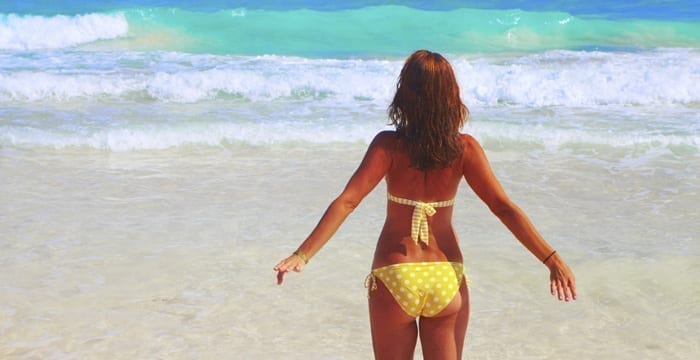Between the hole in the ozone layer and parental warnings, we know we’re supposed to wear sunscreen. But according to the latest report from the Environmental Working Group’s 2015 Sunscreen Report, waaaay too many sunscreens may not be as effective as their bottle claims.
In their review of 1,700 SPF products, the EWG found “persistent problems with the ingredients and marketing of sunscreens for the American market.” EWG identified issues with a whopping 80% of products, some of which contained potentially dangerous ingredients oxybenzone and vitamin A. Oxybenzone is restricted in Japan for possible negative effects on the hormone system, while some evidence has suggested that vitamin A may actually increase sun sensitivity.
EWG’s “Hall of Shame” list cites the many brands that sell sunscreens at SPF 50 and above, although SPF protection tops out at 30 to 50. That’s a problem because higher SPF protections may tempt you to stay in the sun for longer and skip necessary reapplication. And just because you’re not getting burnt doesn’t mean you’re not damaging your skin: High SPF is able to suppress a sunburn while allowing in dangerous UV rays. In fact, the FDA is considering a ban of SPF above 50+. The EWG also recommend skipping spray sunscreen, which can be inhaled and don’t cover skin completely.
So what should you be wearing? The EWG selected 217 beach and sport sunscreens, with brands like La Roche-Posay, Nine Naturals, and Yes to Cucumbers on the list. There’s also a list of 122 moisturizers with SPF, which leaves us with no excuse for not adding one to our daily skincare routine immediately.
Check out the full 2015 Guide to Sunscreens here.
The right product is the first step, but we also need to be vigilant about application: Remember to apply enough lotion (a golfball-sized dollop, according to the New York Times) and reapply every two hours as instructed. And always remember to reapply after you get out of the water!
READ MORE: 33 Sunscreens for People Who Hate Sunscreen




































